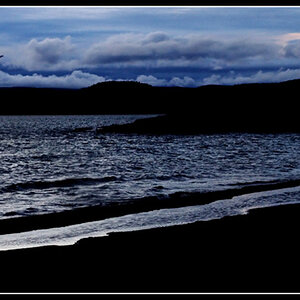snapsnap1973
TPF Noob!
- Joined
- Jan 18, 2013
- Messages
- 147
- Reaction score
- 4
- Location
- Portland, Maine
- Can others edit my Photos
- Photos NOT OK to edit
Ok, this morning I'm really getting interested in the "origins of photography" and was reading about the camera obscura. I guess this goes back to BC Aristotle, etc. Anyways, I got to the part about light going through the hole and crossing opposite directions and of course "flipping" the image and now I'm curious about the whole field of optics I guess!
Darn, now I've gotta go read up on optics! Sir Issac Newton anyone?? LOL.
Anyways, before I go read I though I'd ask a simple (yeah right!) question about how light works. Ok so of course we have to have a light source in order to percieve objects correct? So I'm guessing that light travels from say the sun to an object and then "bounces off" that object to our eye (the sensor) and we percieve it?
Before I go off to read about "optics" and without having really read up on optics, how am I doing so far in my understanding??
Also, I thought that I read that "light travels in straight lines" somewhere today. So if light is bouncing off an image of something and traveling in a straight line, how does it "bend" to enter the tiny hole in the wall if it's not in a direct line with that hole?
I mean say your camera obscura is pointed towards a landscape and there's a mountain that goes up higher than the tiny hole you have in the wall. Does the light bend to get through from the height of the mountain?
This is fun!! Here I go off to read!
Darn, now I've gotta go read up on optics! Sir Issac Newton anyone?? LOL.
Anyways, before I go read I though I'd ask a simple (yeah right!) question about how light works. Ok so of course we have to have a light source in order to percieve objects correct? So I'm guessing that light travels from say the sun to an object and then "bounces off" that object to our eye (the sensor) and we percieve it?
Before I go off to read about "optics" and without having really read up on optics, how am I doing so far in my understanding??
Also, I thought that I read that "light travels in straight lines" somewhere today. So if light is bouncing off an image of something and traveling in a straight line, how does it "bend" to enter the tiny hole in the wall if it's not in a direct line with that hole?
I mean say your camera obscura is pointed towards a landscape and there's a mountain that goes up higher than the tiny hole you have in the wall. Does the light bend to get through from the height of the mountain?
This is fun!! Here I go off to read!


![[No title]](/data/xfmg/thumbnail/33/33359-a5cf76b8e843e82b3831650af6dfa6b3.jpg?1619735923)
![[No title]](/data/xfmg/thumbnail/42/42268-15c1c02cec1d71208987fc7c7ec7784c.jpg?1619740077)




![[No title]](/data/xfmg/thumbnail/31/31093-5a5bf042a168153ccffbce7a66501050.jpg?1619734610)

